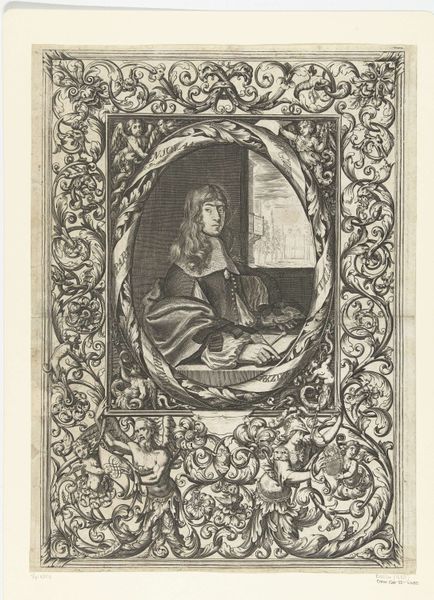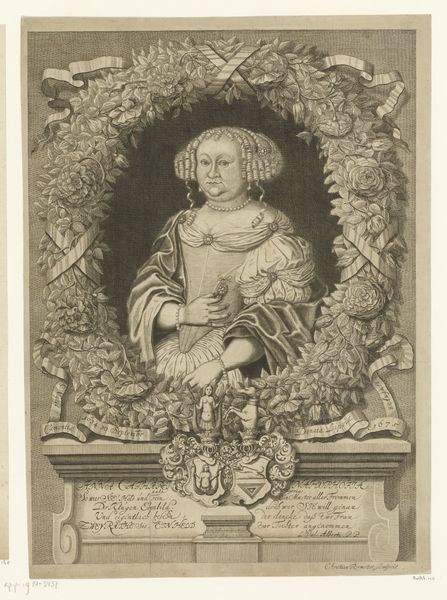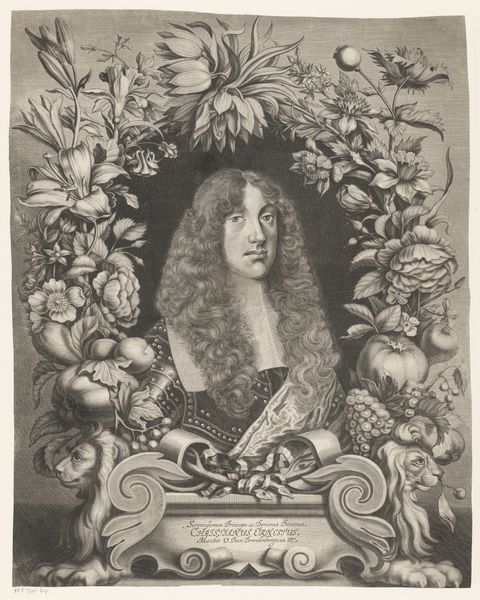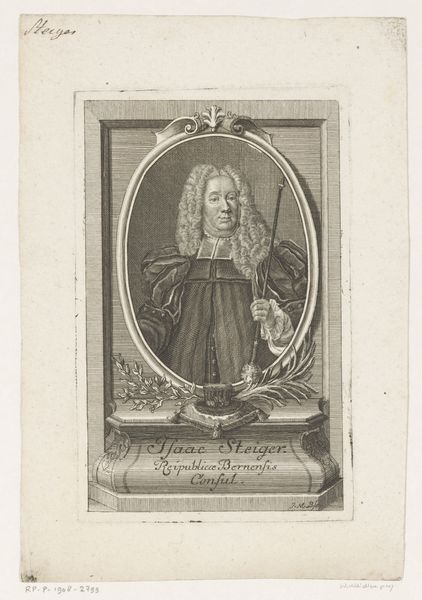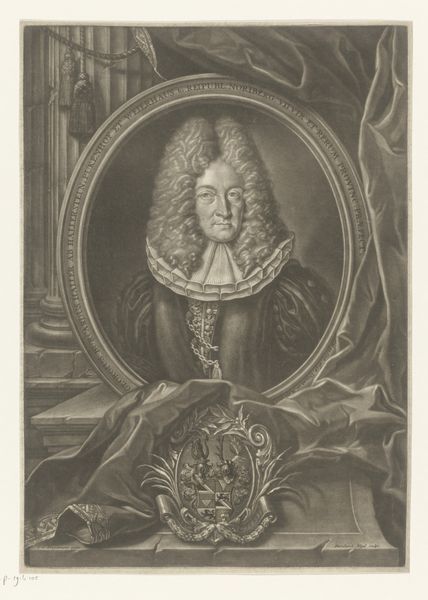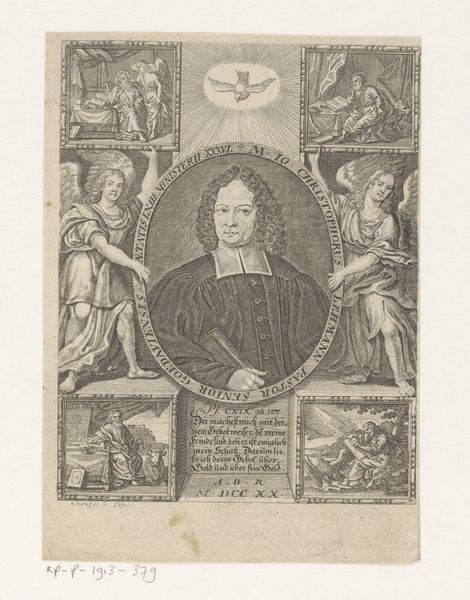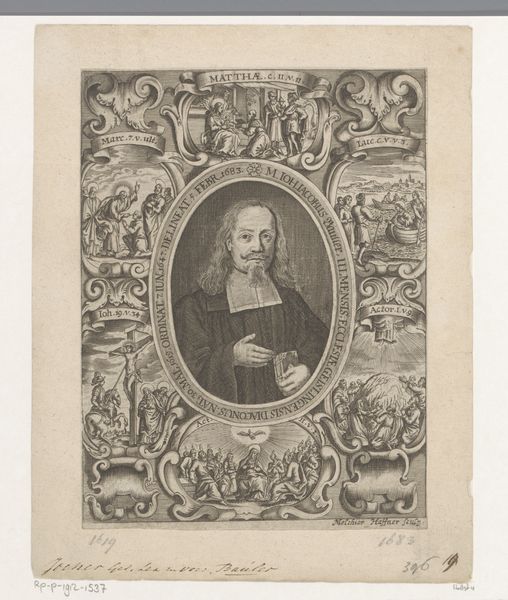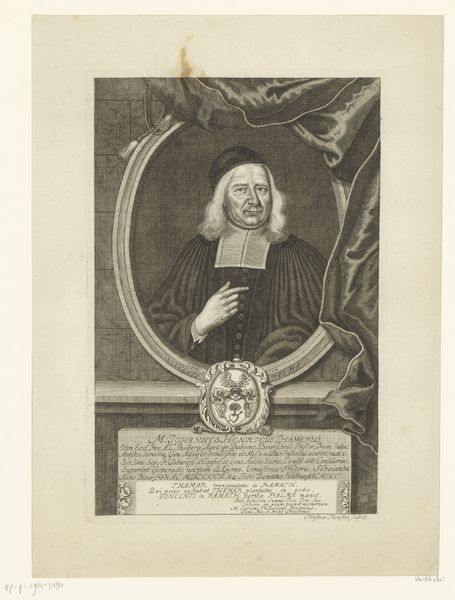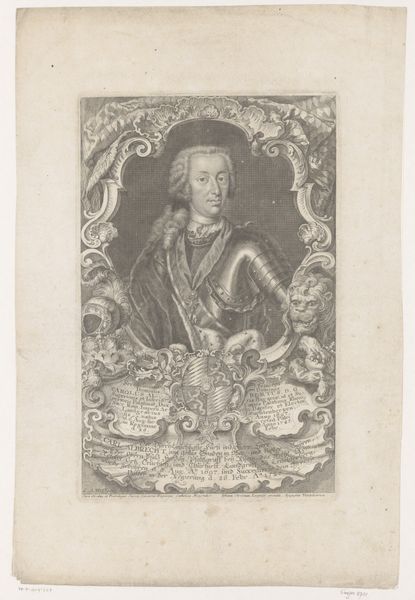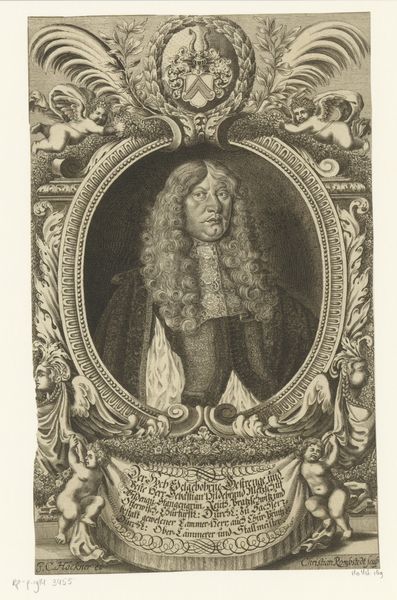
print, engraving
#
portrait
#
self-portrait
#
narrative-art
#
baroque
#
fancy-picture
# print
#
old engraving style
#
caricature
#
figuration
#
form
#
chiaroscuro
#
line
#
portrait drawing
#
history-painting
#
academic-art
#
engraving
#
miniature
#
realism
Dimensions: height 322 mm, width 196 mm
Copyright: Rijks Museum: Open Domain
Editor: This is "Portrait of Sabina Dürr," made sometime between 1665 and 1721 by Christian Romstet. It’s an engraving, so a print. It's striking how much detail is crammed into the image. What catches your eye? Curator: It's the production itself. Consider the labour involved in such meticulous engraving, the sharp tools cutting into metal. The image, framed and embellished, serves a specific purpose. How does the choice of a printed image, so meticulously crafted, impact its role and distribution in 17th and 18th century society? Editor: So, less about who she *was* and more about how her image circulated? The printing process democratizes portraiture, making it accessible. Curator: Precisely. Think about the materials themselves: the paper, the ink, the metal plate. Each component carries its own history of extraction, trade, and craftsmanship. Then we must remember this artwork comes from the Baroque period. Are we really dealing with "Realism" here? How much does this image attempt to reproduce reality? What's missing? Editor: It's definitely staged. All those flourishes…I see what you mean. So, it's about controlled reproduction rather than individual creation. I had been caught up in the figure within the portrait itself, but now I see this from the printer’s perspective. Thank you. Curator: And thank you for prompting a look at art's construction.
Comments
No comments
Be the first to comment and join the conversation on the ultimate creative platform.
